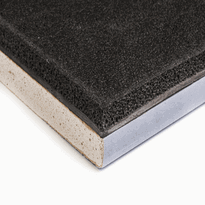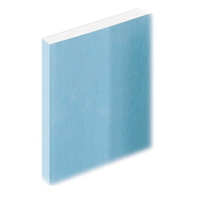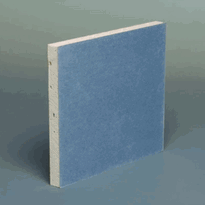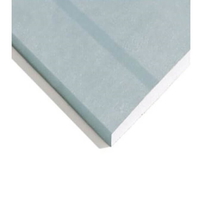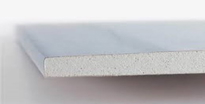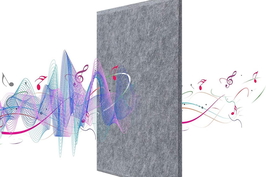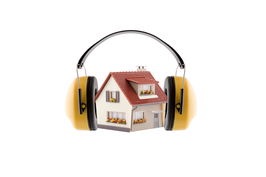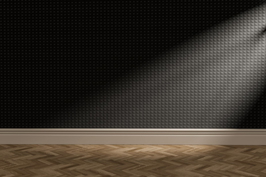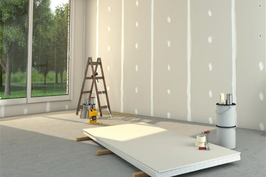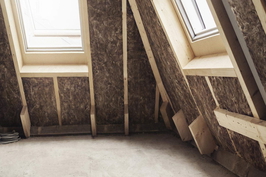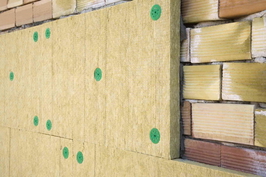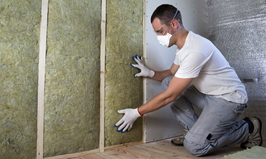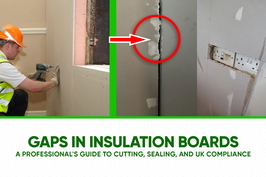Double Plasterboard for Soundproofing
Double plasterboard enhances soundproofing by increasing the mass and density of walls, which effectively reduces the transmission of airborne noise. Proper installation involves applying two layers of plasterboard with damping materials in between, ensuring all gaps are carefully sealed to optimise performance. For best results, additional techniques such as installing resilient channels or incorporating specialised insulation can be considered.
While double plasterboard significantly reduces general noise levels, it is less effective against impact noises and low-frequency sounds unless combined with other soundproofing methods. Understanding these combined strategies allows homeowners and builders to maximise the acoustic performance of interior walls, creating a quieter and more comfortable environment throughout the UK.
Understanding the Principle of Double Plasterboard in Soundproofing
Understanding the principle of double plasterboard in soundproofing begins with recognising its primary function of increasing the mass of a wall, which is essential for reducing sound transmission.
By adding an extra layer of plasterboard, the overall density and weight of the wall are increased, making it more difficult for sound waves to pass through.
While mass alone can absorb some sound energy, it isn't sufficient for effective soundproofing without supplementary measures.
Enhancing the wall’s density helps to block airborne noise, but additional strategies such as insulation within the cavity and creating an air gap—known as decoupling—are necessary for ideal results.
Proper installation, including sealing seams and gaps, ensures that sound encounters multiple barriers, further improving the wall’s sound resistance.
Advantages of Installing Double Plasterboard for Noise Reduction
Benefits of Installing Double Plasterboard for Noise Reduction
Installing double plasterboard provides notable advantages for decreasing noise transfer through walls. The added mass and density of two layers substantially lower sound vibrations, often achieving reductions of up to 36 dB. This translates to approximately 90% noise reduction, greatly improving acoustic comfort. Such enhanced sound insulation works effectively across a broad range of noise frequencies, benefiting both airborne and impact noise control.
Incorporating these soundproofing principles maximises the performance of double plasterboard installations:
Soundproofing Technique |
Effectiveness |
| Decoupling with resilient bars | Minimises vibration transfer between surfaces, boosting noise mitigation |
| Incorporating absorption materials | Absorbs sound energy, extending the effective frequency range |
| Proper sealing | Eliminates sound leaks, maintaining the integrity of the system |
When combined with these strategies, double plasterboard offers a practical and high-performance solution for improved acoustic comfort in both residential and commercial settings.
Comparing Double Plasterboard With Other Soundproofing Methods
Double plasterboard offers a practical and effective soundproofing solution that usually strikes a good balance between performance and cost, especially when compared to specialised systems or alternative materials. It generally provides higher Sound Transmission Class (STC) ratings—ranging from 45 to 50+—by boosting mass and enhancing sound insulation durability over many years. Compared to specialised acoustic plasterboard, double plasterboard tends to be more affordable and straightforward to install, although acoustic plasterboard may deliver superior sound dampening when combined with additional layers. When contrasted with mass-loaded vinyl (MLV), plasterboard provides a more comprehensive barrier with increased durability and less ongoing maintenance required. Resilient channels work by decoupling wall elements to reduce sound transmission but may involve a more complex installation process. Additionally, double plasterboard can be easily integrated into existing structures with minimal disruption, making it a convenient choice for renovations in existing walls.
Common Challenges and Limitations of Using Double Plasterboard
While double plasterboard can considerably enhance soundproofing within a room, it's important to recognise its limitations that can impact overall performance. One key challenge is its reduced effectiveness against impact noises, such as heavy footsteps or objects dropping, which often require supplementary measures like floating floors or resilient channels to adequately address. Adding additional layers of acoustic treatment alone does not fully compensate for these types of noises, which are best tackled through targeted structural solutions. Low-frequency sounds, including deep bass notes, tend to transmit through vibrations that pass through the structure unless measures involving high-mass materials or specialised damping techniques are employed. This means that even with double plasterboard, some low-frequency noise may still be audible. The method of installation also plays a vital role; improper fixing, such as attaching plasterboard directly to the wall or ceiling without incorporating air gaps or decoupling, can cause resonance and diminish soundproofing effectiveness. Ensuring that the boards are correctly installed with appropriate movement breaks helps prevent unwanted vibrations. Furthermore, flanking transmission—where sound bypasses the main barrier via unsealed gaps, cavities, or structural connections—can significantly reduce the noise reduction benefits of double plasterboard. Precise sealing of all joints and gaps, along with comprehensive treatment of cavities and structural interfaces, is essential to optimise soundproofing. These challenges highlight the importance of proper installation, thorough building treatment, and supplementary soundproofing measures. Combining these strategies can maximise the effectiveness of double plasterboard and achieve a more acoustically comfortable environment.
Materials and Techniques for Maximizing Soundproofing Effectiveness
Maximising the soundproofing effectiveness of double plasterboard systems depends heavily on the careful selection and correct application of specialised materials, combined with strategic layering techniques. Acoustic plasterboard, with its higher density core, provides a more effective barrier against sound transmission, while materials such as mass-loaded vinyl (MLV) enhance overall mass and damping properties. Damping compounds applied between layers serve to dissipate vibrational energy, thereby reducing resonance, and closed-cell foam is used to fill air gaps, improving sound absorption and preventing airborne noise leakage. Acoustic membranes work by converting sound waves into small amounts of heat, which further isolates spaces. Research indicates that the correct application of these materials can significantly improve soundproofing performance by reducing both impact and airborne noise transmission. Proper techniques for optimum results include incorporating multiple layers of plasterboard, employing decoupling methods with resilient channels or clips, and sealing edges meticulously to prevent sound leaks. These strategies are grounded in scientific principles such as the mass law, damping, and reflection across various frequencies, all of which contribute to significantly improving soundproofing performance.
Material Type |
Key Benefit |
| Acoustic plasterboard | Enhances sound damping through higher density |
| Mass-loaded vinyl (MLV) | Adds mass and damping, reduces airborne noise |
| Damping compounds | Dissipates vibrational energy, minimising resonance |
| Closed-cell foam | Absorbs sound, fills gaps to prevent air leakage |
| Acoustic membranes | Converts sound waves into heat, boosts sound isolation |
Attaining optimal soundproofing results involves a combination of these materials and techniques, carefully applied to target specific noise issues. It is essential to follow established building practices and consider the unique acoustical challenges of each space to achieve the best possible outcomes.
Conclusion
Double plasterboard effectively enhances soundproofing by adding mass and damping vibrations, making it a reliable choice for noise reduction. Proper installation, including the use of resilient channels and specialised compounds, maximises its performance. While it has limitations such as increased weight and space requirements, understanding these factors allows for precise application. When combined with suitable materials and techniques, double plasterboard provides a practical, durable solution for controlling sound transmission in various indoor environments.
